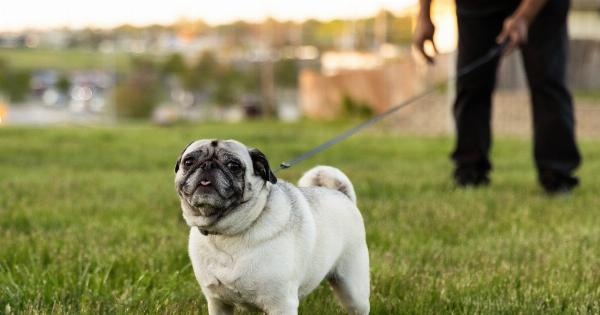As a dog owner, you have likely heard about various methods for training your furry friend. From clicker training to positive reinforcement, there are several techniques that can help you mold your dog’s behavior.
However, one often-overlooked tool for shaping your dog’s behavior is your intuition.
What is Intuition?
Intuition is a natural ability to understand or know something without the need for conscious reasoning. It is simply the feeling or sense that we get about a particular situation or person.
In the context of dog training, intuition allows us to understand our dog’s behavior and needs instinctively.
Why is Intuition Important for Dog Training?
Intuition plays a crucial role in dog training as it allows you to understand your dog’s behavior better. Every dog is different, and what works for one may not work for another.
With intuition, you can tailor your training methods to your dog’s personality, temperament, and needs.
Intuition also helps you read your dog’s body language more effectively, allowing you to address any issues promptly.
For example, if your dog starts to exhibit signs of fear or aggression, your intuition will let you know that something is not right, and you can take the necessary steps to correct the behavior.
How to Develop Your Intuition?
Developing intuition is not an overnight process and requires patience and practice. Here are some ways to start developing your intuition to enhance your dog training skills:.
1. Pay Attention to Your Gut Feelings
One of the most crucial steps in developing your intuition is trusting your gut feelings. When you feel that something is not right, it probably isn’t.
Pay attention to these feelings and use them as a guide to adjust your training methods accordingly.
2. Observe Your Dog Closely
Observation is key to understanding your dog’s body language and behavior. Spend time watching your dog and learning how they communicate. This will lead to a better understanding of your dog’s needs and personality.
3. Practice Meditation or Mindfulness
Meditation and mindfulness are effective tools for developing your intuition. These practices help you become more aware of your thoughts, feelings, and surroundings, allowing you to tap into your intuition more easily.
4. Seek Out Professional Training
Professional dog trainers can provide guidance on enhancing your intuition. They can teach you to read your dog’s body language and behavior better and help you improve your training skills.
How to Use Your Intuition in Dog Training?
Now that you have developed your intuition let us look at how to use it in dog training effectively.
1. Determine the Root Cause of Behavior Issues
Intuition can help you uncover the underlying causes of any behavior issues that your dog may have. By addressing the root cause, you can create a personalized training plan that caters to your dog’s needs.
2. Adjust Training Techniques to Suit Your Dog’s Personality and Needs
As mentioned above, each dog is unique, and what works for one may not work for another. Intuition can help you tailor your training techniques to your dog’s personality, temperament, and needs, ensuring effective results.
3. Address Behavioral Issues Promptly
Your intuition can help you identify any behavioral issues that arise in your dog and address them promptly. By doing so, you can prevent unwanted behavior from persisting and becoming ingrained over time.
The Bottom Line
Intuition is a powerful tool for understanding your dog’s behavior and needs.
By developing your intuition, you can tailor your training methods to suit your dog’s personality, improve communication, and address any behavioral issues promptly. In summary, intuition is not just a buzzword; it is a valuable skill that every dog owner should cultivate.



























